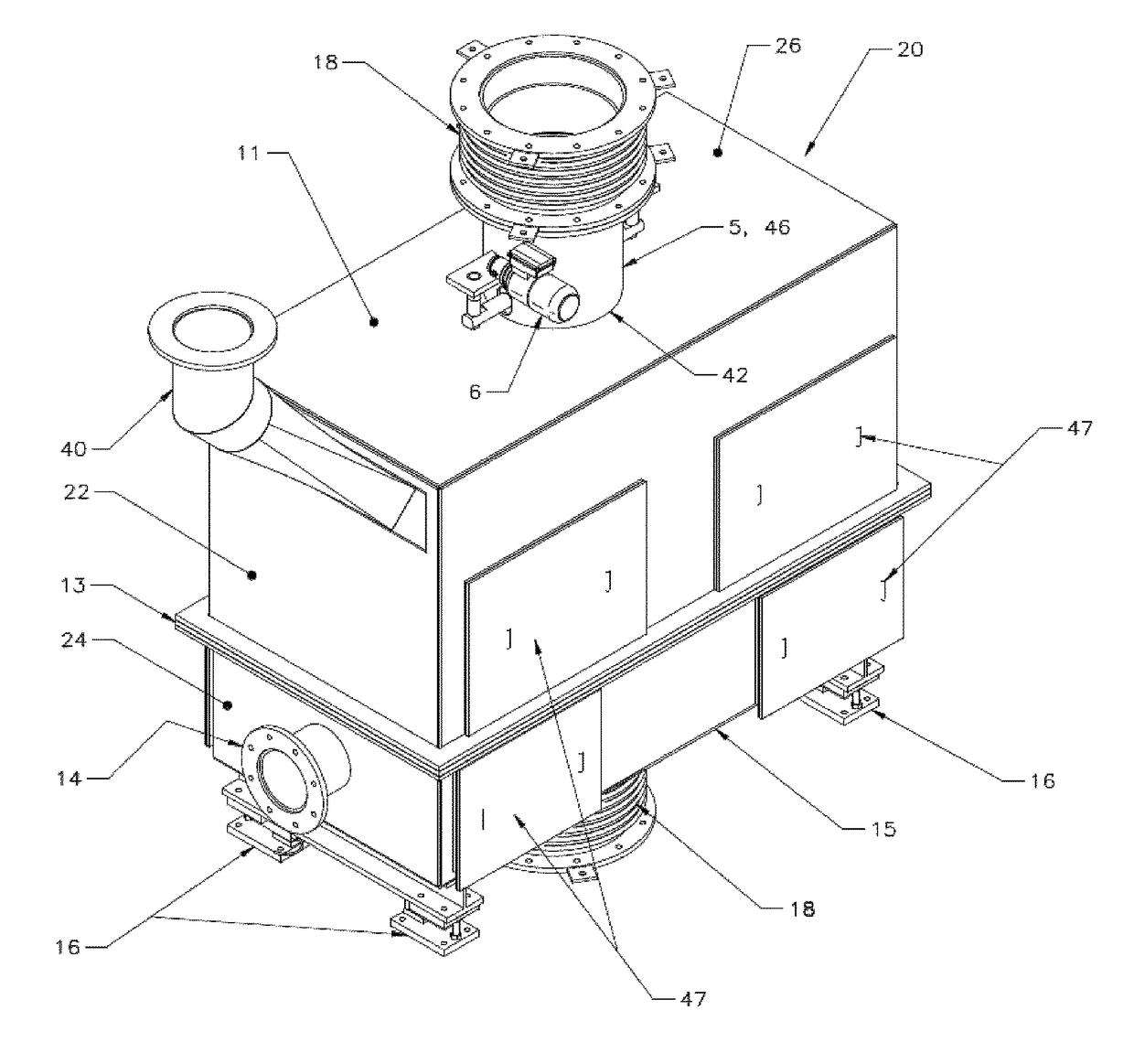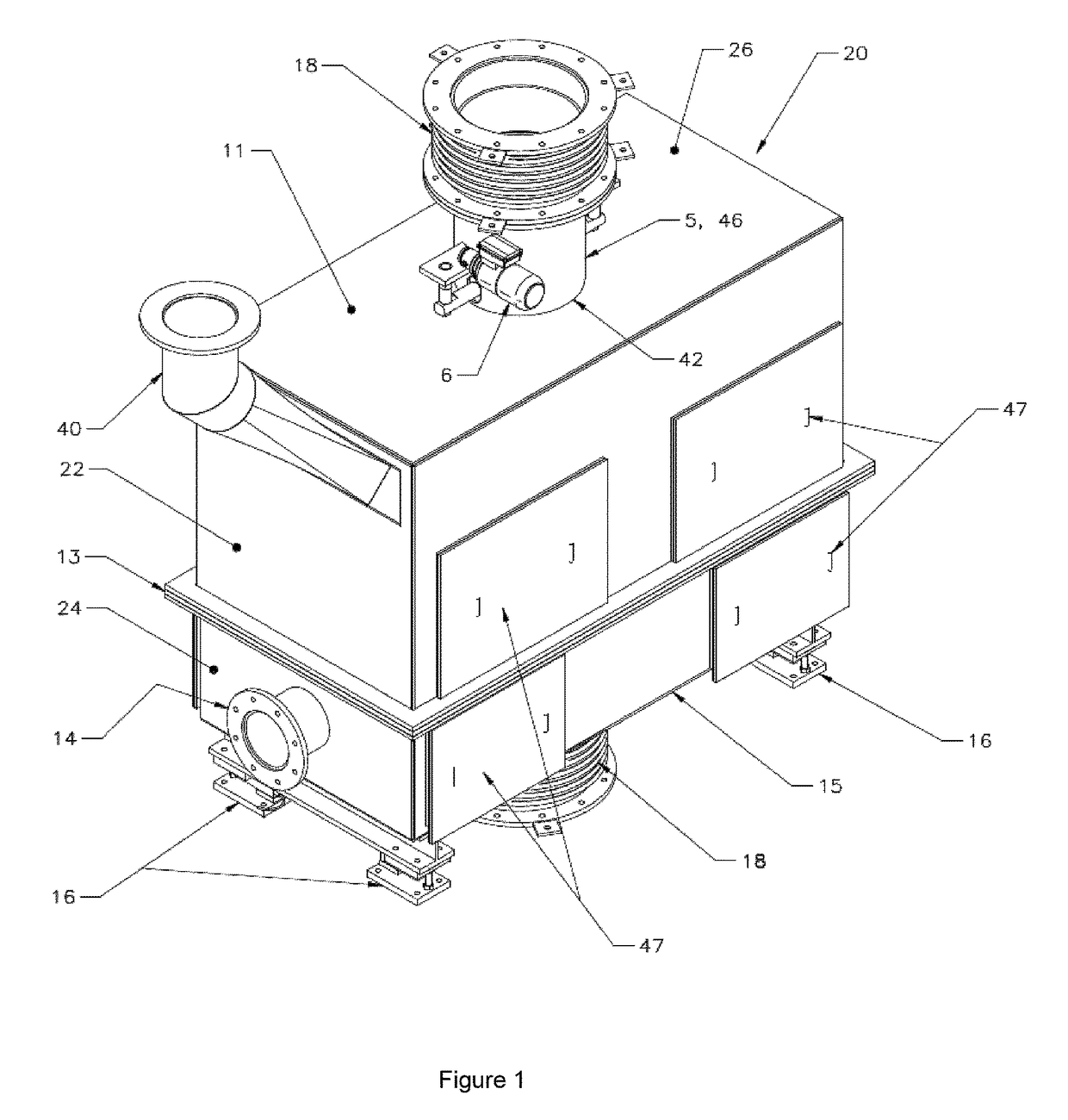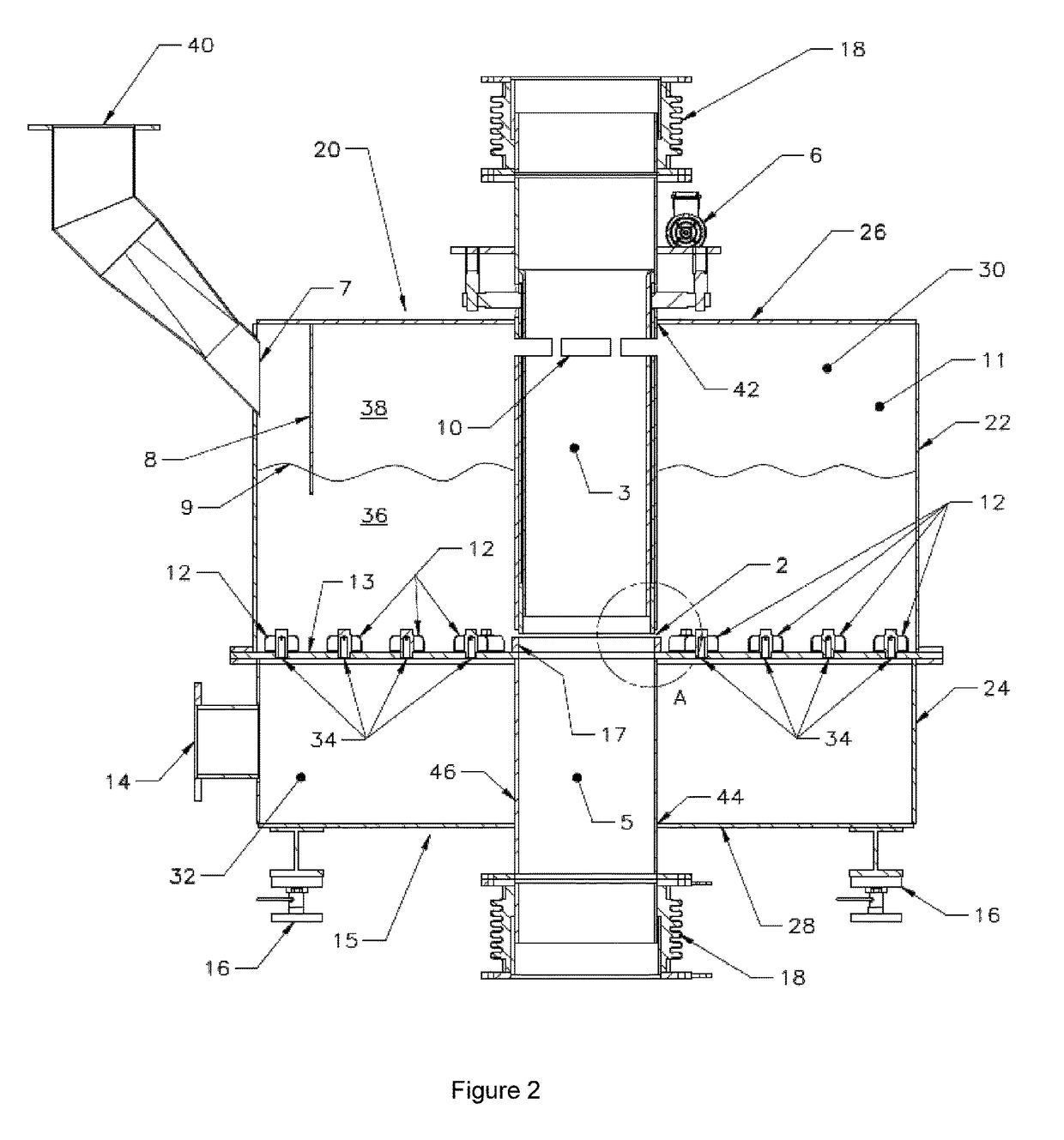Feed flow conditioner for particulate feed materials
a flow conditioner and feed material technology, applied in the direction of combustion process, control device of furnace, lighting and heating apparatus, etc., can solve the problems of affecting poor oxygen efficiency, increased copper losses to slag, etc., to improve the combustion performance of flash smelting concentrate burners, reduce low-frequency fluctuations, and low spatial non-uniformity
- Summary
- Abstract
- Description
- Claims
- Application Information
AI Technical Summary
Benefits of technology
Problems solved by technology
Method used
Image
Examples
example
[0108]A flash smelting furnace operating with a conventional feed system was simulated using an axisymmetric transient CFD model. Details of the modeling work can be found in a paper by Lamoureux et al. entitled “Impact of Concentrate Feed Temporal Fluctuations on a Copper Flash Smelting Process”, http: / / onlinelibrary.wiley.com / doi / 10.1002 / 9781118887998.ch52 / summary. Three transient conditions, with identical time-averaged feed rates, were modeled: (1) ideal, temporally uniform feed; (2) intermittent feed injected with a frequency of 1 Hz, with an 80% duty cycle; and (3) intermittent feed injected with a frequency of 5 Hz, with an 80% duty cycle. The latter two cases correspond to the feed frequencies of a conventional feed system, and the modeled natural frequency of a feed flow conditioner (as described herein), respectively. Performance of the burner was evaluated on the basis of oxygen efficiency. The reported values for the intermittent feed case are relative to the oxygen effi...
PUM
 Login to View More
Login to View More Abstract
Description
Claims
Application Information
 Login to View More
Login to View More - R&D
- Intellectual Property
- Life Sciences
- Materials
- Tech Scout
- Unparalleled Data Quality
- Higher Quality Content
- 60% Fewer Hallucinations
Browse by: Latest US Patents, China's latest patents, Technical Efficacy Thesaurus, Application Domain, Technology Topic, Popular Technical Reports.
© 2025 PatSnap. All rights reserved.Legal|Privacy policy|Modern Slavery Act Transparency Statement|Sitemap|About US| Contact US: help@patsnap.com



